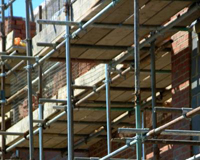Court of Appeal rules on business rates for premises undergoing refurbishment
The Court of Appeal today overturned an Upper Tribunal decision that office premises undergoing refurbishment have only a nominal rateable value of £1.
The Court allowed a Valuation Officer’s appeal, finding that the works being carried out fall within the definition of “repair”, and that the Upper Tribunal was wrong to rule that the refurbishment – which includes reconfiguration as three separate units – went beyond that. Lewison LJ said that it is the nature of the works that is determinative of what constitutes repair, not the intention of the owner, and considered that the VOA Rating Manual is wrong to have regard to the question of intent.
He said that this violated the longstanding principle: “The rateable quality of land is not to be determined by what it once was, or by what it may hereafter become.”
The Court of Appeal today overturned an Upper Tribunal decision that office premises undergoing refurbishment have only a nominal rateable value of £1.
The Court allowed a Valuation Officer’s appeal, finding that the works being carried out fall within the definition of “repair”, and that the Upper Tribunal was wrong to rule that the refurbishment – which includes reconfiguration as three separate units – went beyond that. Lewison LJ said that it is the nature of the works that is determinative of what constitutes repair, not the intention of the owner, and considered that the VOA Rating Manual is wrong to have regard to the question of intent.
He said that this violated the longstanding principle: “The rateable quality of land is not to be determined by what it once was, or by what it may hereafter become.”
Blake Penfold, consultant on business rates at GL Hearn, said that the decision was likely to lead to more disputes in respect of works that involved alterations in addition to repair and refurbishment.
He said: “The decision does give some clarity on the what is the meaning of the assumed ‘reasonable state of repair’ when valuing property for rating purposes. This assumption was first introduced by the Rating (Valuation) Act 1999 and this is the first time it has been tested at the level of the Court of Appeal.
“The decision is likely to mean that the Valuation Office Agency will refuse to reduce or delete assessments of properties undergoing works of repair or refurbishment.”
Mr Penfold added that another issue that will need to be tested further is how this decision — about what works constitute repair, and are therefore to be ignored when valuing for rating — sits with the more fundamental case law relating to what constitutes a hereditament.
Raising a further issue for the future, he said: “Finally, if properties undergoing refurbishment are to remain in assessment, as this one apparently is, there is the question of what happens to their value when the works are completed. If these are just works of repair, and all properties are assumed to be in reasonable repair, will this mean an end to the Valuation Office increasing the assessments of refurbished properties?”
Roger Cohen, joint head of real estate disputes at Berwin Leighton Paisner LLP, added: “The result is disappointing for owners seeking to mitigate empty rates. However, the Rating Manual has been shown to be vulnerable. There will be lessons for ratepayers in the detail of the judgments.”
The case centered on the valuation of offices on a single floor of a three-storey block known as Avalon House at Sunderland Enterprise Park. The property stood vacant since 2006 and in March 2010 the owner entered into a contract to carry out improvement works, including the removal of all internal elements other than the lift and the staircase enclosure. The works also included construction of new common parts to the first floor and reconfiguration as three new letting units. The refurbishment was being carried out at the key date for rating purposes of 6 January 2012.
The freehold owner, solicitor SJ & J Monk, won a ruling from the Upper Tribunal that the premises at that date were not capable of beneficial occupation as offices, and that the rateable value – formerly £102,000 – should be assessed at the nominal amount of £1.
Newbigin (Valuation Officer) v SJ & J Monk Ltd Court of Appeal 13 February 2015
Sarabjit Singh & Matthew Donmall (instructed by HMRC Solicitors Office) for the appellant
David Reade QC & Dominic Bayne (instructed by S J & J Monk) for the respondent











